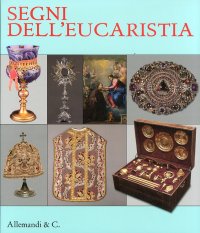Beato Angelico
Firenze, Palazzo Strozzi, 26 settembre 2025 - 25 gennaio 2026.
A cura di Carl Brandon Strehlke.
Testi di Stefano Casciu, Marco Mozzo, Angelo Tartuferi.
Venezia, 2025; ril., pp. 456, 300 ill. col., cm 24x29.
prezzo di copertina: € 80.00
|
Libri compresi nell'offerta:
Beato Angelico
Firenze, Palazzo Strozzi, 26 settembre 2025 - 25 gennaio 2026.
A cura di Carl Brandon Strehlke.
Testi di Stefano Casciu, Marco Mozzo, Angelo Tartuferi.
Venezia, 2025; ril., pp. 456, 300 ill. col., cm 24x29.
OMAGGIO (prezzo di copertina: € 80.00)
Marche e Toscana. Terre di grandi maestri tra Quattro e Seicento
Ospedaletto, 2007; ril., pp. 320, ill. col., tavv. col., cm 25,5x29.
OMAGGIO (prezzo di copertina: € 77.00)
Segni dell'Eucarestia
A cura di M. Luisa Polichetti.
Ancona, Osimo, Loreto Jesi, Senigallia, Fabriano e Metelica, 23 giugno - 31 ottobre 2011.
Torino, 2011; br., pp. 221, ill. b/n e col., cm 24x28.
OMAGGIO (prezzo di copertina: € 32.00)
Politics, Civic Ideals and Sculpture in Italy c.1240-1400
Cassidy Brendan
Harvey Miller Publishers
Testo Inglese.
London, 2007; ril. in tela, pp. 314, 185 ill. b/n, cm 21x27.
(Studies in Medieval and Early Renaissance Art History. 46).
collana: Studies in Medieval and Early Renaissance Art History. HMSAH.
ISBN: 1-905375-01-8 - EAN13: 9781905375011
Soggetto: Saggi (Arte o Architettura),Scultura
Periodo: 1000-1400 (XII-XIV) Medioevo
Testo in: 
Peso: 1.75 kg

Quante strade. Bob Dylan e il mezzo secolo di «Blowin'in the wind»
Friuli Venezia Giulia Sguardi sull'acqua / Glimpses of its water
Brescia. Uno sguardo senza tempo sul centro storico della città
Artists and Pirates. Satirical Prints in Georgian London and Dublin










